The issues involved in China’s sale of two more nuclear reactors need to be better understood. Arguments that India, as a non-NPT state, has itself secured a nuclear deal with the US and therefore has little ground to oppose a China-Pakistan nuclear deal, or that two additional reactors for Pakistan is not going to enhance the nuclear threat to India, miss the point. That Pakistan has acute energy shortage and needs to tap nuclear energy as a source, more so as it is environmentally cleaner, is not sufficient reason to justify the Sino-Pakistan deal in the way it is being considered at present. The argument that China and Pakistan will in any case go ahead and therefore it makes little sense for India to oppose the deal is a defeatist position. A further one that, given this reality, it might be better to engage China and Pakistan diplomatically on this question in a conciliatory mode does not take into account the deeper strategic and political intentions behind China’s nuclear cooperation with Pakistan and this specific deal.
China has engaged in strategic nuclear proliferation in the subcontinent by transferring nuclear materials and weapons design to Pakistan, and even testing Pakistan’s weapon in 1990 at its testing site in Lop Nor. China’s objective has been to strategically neutralize India through Pakistan, give it the muscle to continue its confrontation with India and the capacity to deter serious Indian military reprisals for its adversarial policies. China has manoeuvred to blur the reality of any direct China-India nuclear rivalry, transferring such rivalry to the subcontinent, making India appear as the initiator of a nuclear arms race in the region, and creating in the mind of the international community a dangerous India-Pakistan nuclear equation with the potential of a nuclear conflict erupting between two “historical enemies”.
The US has overlooked errant Chinese nuclear conduct vis a vis Pakistan for several reasons. Pakistan became central to US effort to counter the Soviets in Afghanistan, and, therefore, despite evidence that Pakistan was pursing a nuclear weapon programme with Chinese assistance, the Pressler Amendment was devised to allow military and economic assistance to Pakistan debarred under US law for a proliferating country. For Cold War considerations, the US was unwilling to apply any serious sanctions on China which had by then become a strategic partner against the Soviet Union. The US, opposed to India’s nuclear ambitions and wary of the perceived India-Soviet axis that had successfully broken up Pakistan in 1971, has long backed a “strategic balance” in South Asia, which explains its remarkable tolerance of Sino-Pak nuclear collaboration. US unwillingness to expose the A.Q.Khan affair in full, in which the the Pakistani political and military establishment has been involved to the hilt, is consistent with US equivocation on China-Pakistan proliferation infractions.
The Indo-US nuclear deal marked a strategic “de-hyphenation” of India and Pakistan in US policy, evoking anguish in Pakistan and distrust in China. The US was seriously disturbing the hitherto tacit entente between it and China to contain a nuclear India. Pakistan, obsessed with parity with India, has vociferously opposed the deal and also asked for one for itself. For China, making an exception for India to the current nuclear rules could only mean building up India as a potential counterweight to it. By signing up for two aditional nuclear power reactors for Pakistan, China wants to send several messages to the US, India and the wider world. Its warning that if the US made an exception for India, other countries may do likewise for their friends is being translated into action. What the US has done for its protege, India, China is doing for its protege, Pakistan. If the US is disturbing the nuclear balance in South Asia- as China has alleged- China is restoring it. If the US will not accord parity of treatment to Pakistan, China will do so. China is signalling that the US cannot set the nonproliferation rules for all others, or use its clout to break the global consensus on the nonproliferation regime to suit its strategic needs, and that China will take autonomous decisions to suit its own interests. China is occupying space being ceded by declining US hegemony and setting itself up as a rival power to the US. China no doubt calculates that a militarily and financially embattled US will avoid a frontal conflict with it on this issue, keeping in mind also that the US needs its political support in dealing with the nuclear defiance of Iran and North Korea, problems of higher strategic priority for the US. Finally, China is declaring to India that it will continue to build up nuclear Pakistan against it, deny India any advantage, counter any potential India-US axis with a countervailing China-Pakistan axis. That China is willing to extend its patronage to Pakistan in disregard of its non-proliferation obligations and the NSG guidelines implies high stakes on both sides: need for the facade of civilian nuclear cooperation to continue Chinese technological and material support for Pakistan’s military programme with its suspected extra-regional linkages.
India must therefore oppose the envisaged China-Pakistan nuclear cooperation. If this passes through an open, widely debated process, with legislative underpinning and imposition of stringent nonproliferation conditions on Pakistan, India would have no reason to object. If, as the Chinese argue, both sides are respecting their international obligations and the new power plants will be under IAEA safeguards, why was India, with a clean nonproliferation record, no A.Q. Khan type baggage, no religious extremism, terrorist groups and clandestine proliferation networks blotting its landscape, required to separate its civilian and military facilities, shut some reprocessing units, accept the “right to return” if it tests, legally commit itself to a testing moratorium, agree to cooperate with the US on FMCT negotiations, establish a special reprocessing facility according to US dictated specifications for reprocessing US spent fuel, put its future fast breeder reactors under IAEA safeguards etc. We too could have obtained nuclear cooperation by simply agreeing to put internationally assisted reactors under IAEA safeguards. Why was cooperation with India by others opposed by the US until it cleared the way? If China does not have domestic legislation on nuclear cooperation like the US, the NSG can stipulate the conditions under which Pakistan would become eligible for civilian nuclear cooperation as a non-NPT state. We struggled hard to get a “clean waiver” from the NSG, and didn’t quite get it. There cannot be different standards for China/Pakistan and India. The US, so far subdued, must insist on the projected China-Pakistan deal being presented to the NSG for approval. If China ignores the NSG, the intended cooperation should be blocked in the IAEA where the issue of safeguards will have to be addressed and decided. Our strategic partnership with the US will lose meaning if the US once again overlooks nuclear cooperation between our two adversaries avowedly intended to counter the strategic advantage India has ostensibly obtained through the India-US deal. If the US sacrifices India’s interests to protect its China and Pakistan equities, the India-US nuclear deal would look most invidious.
The writer is a former Foreign Secretary ([email protected]).


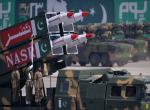
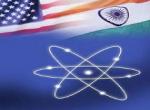
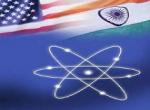
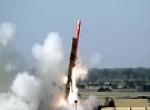


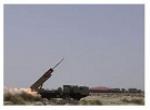
Post new comment